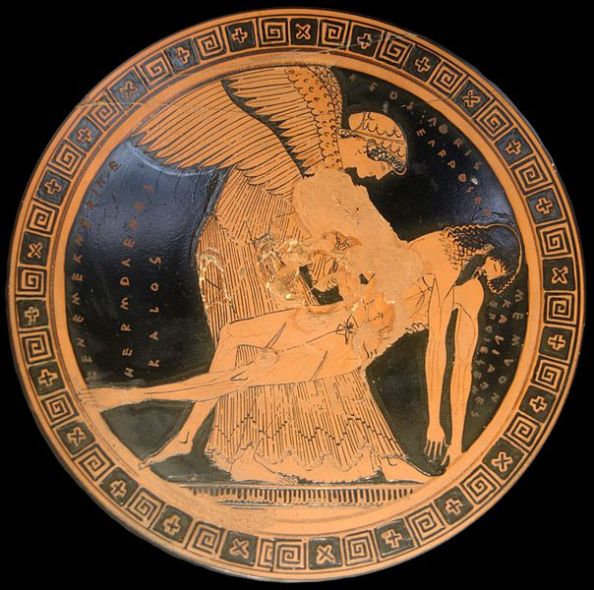I have been searching for more on the practice of inscribing nonsensical or asemic calligraphy onto pottery. The example that I have of that practice came from our visit to the Smithsonian museums in DC last year. A fellow grad student at the time was studying Islamic ceramics as an independent study and we were looking through the galleries devoted to this area of study. Separately and then together, we read the information card explaining that the calligraphy said nothing and was meant for an illiterate population, discussed the implications, marveled over the meaning that must have been ascribed to those meaningless marks. And now I can find nothing on the production of such vessels. Do I seriously have to travel back to DC to find this pot? For now, I am going to contact the Smithsonian branch (The Freer Gallery?) responsible for curating this collection and request some information.
I did come up with more background on historical inscriptions on pottery. The following examples are among the oldest and stem from Islamic and Greek cultures.
Pots with inscriptions, such as this one pictured here and in a previous post, are commonly referred to as epigraphic ware. There are examples in Islamic lusterware, Samanid, and Seljuk pottery. Samanid pottery was inscribed with proverbs and morals. Seljuk ceramics came later and focused almost exclusively on poetry, specifically love poetry. A typical inscription reads as follows:
In the world of love, grief is no less than joy:
Whoever is not glad to grieve, is not happy;
However wide the wilderness of calamity may be
I have seen that, for the foot of love, it is not even a step
What does love poetry have to do with pottery? To me it speaks to the poignancy of everyday objects, to the wish to have these words always with, perhaps even on the lips of, the beloved, to be forever within reach of the heart in need of those words. Fired and permanent, fragile and precious, held close to life in use, the immortal sonnet made material again.
There are also examples of Greek inscriptions on pottery that indicate some sort of erotic love but have not been satisfactorily explained by historians and anthropologists. Inscriptions on these pots compliment a specific person on their sexual attractiveness, usually by saying simply “X is beautiful,” where the word “kalos” or “kale” meaning “beautiful” carries an erotic connotation.
So, even though I am distractedly more interested in the asemic examples of calligraphy in these traditions, I am very much intrigued at the choice of message for inscription on pottery. It seems that dishware, pots, and vessels have been used as records and tokens of love for longer than jewelry or adornment. Though both forms would eventually serve as material for messages of love, domestic pottery seems to have come first, or at least simultaneously. To me, that implies that adornment was, at first, status-oriented alone and that lovers and teachers held more domestic intentions for their words of love and morality. Or were these pots prominently displayed, like hunters display heads on plaques, their tender or self-righteous words held out as evidence of one’s desirability and morality? Could the greek pots be nothing more than notches on a bedpost? And still, what an odd place to put those notches.

